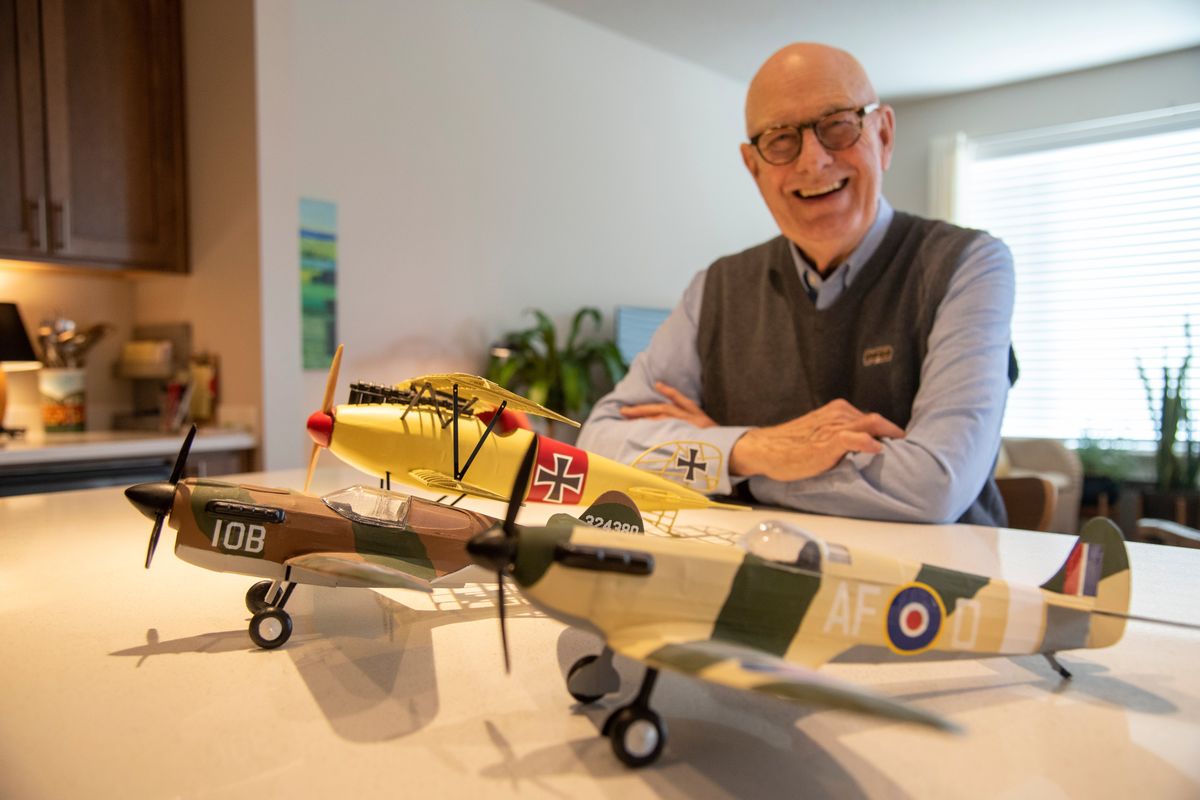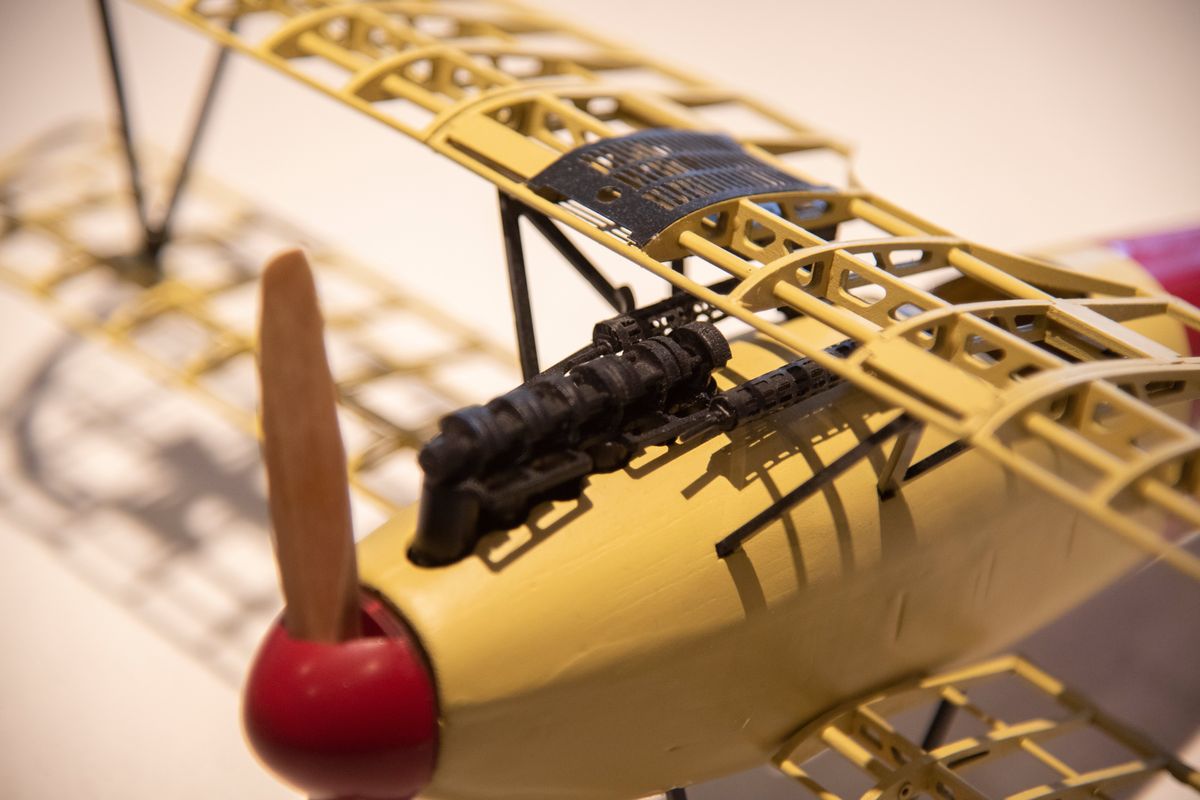Pandemic project: Pilot revives childhood hobby of building balsa model airplanes

When Mike Moore was a boy growing up in Lima, Ohio, his dad used to take the family to the local airport to watch the planes take off and land. Sometimes they’d pack a picnic lunch and drive to the bigger airport in Dayton.
That early exposure to the magic of flight fostered a deep-rooted desire in Moore to become a pilot – which he eventually did.
“I started flying in college,” he said. “I joined the Air Force and was a maintenance officer, but I continued flying lessons.”
In the depths of the pandemic, Moore remembered how as a teen he’d built a balsa and tissue paper airplane. With plenty of time on his hands, he went online and ordered three models from Guillow’s, a company that’s been making model aircraft since 1926.
“The last time I made one was 60 years ago when I was 15,” Moore said. “I remember doing it in the summer.”
He’d quickly moved on to sturdier plastic models, and then to the real thing.
Moore became a licensed pilot in 1979, and after a 25-year career as a hospital administrator, he decided he wanted a job in aviation.
“I think of myself as a pilot first,” he said. “Now, I have an airplane out in Deer Park.”
He worked for Cessna for several years, and while involved with the delivery of a fleet of planes to the FBI, he became friends with one of the agents who told him there was a job opening at the agency that would be perfect for his skills.
“I was going to retire from Cessna, but I thought it’d be interesting to work for the FBI,” said Moore.
He spent five years as a quality assurance specialist with the aviation division of the agency.
“Then I decided I wanted to have time for pleasure flying.”

The pandemic clipped his wings a bit, but the arrival of the model kits gave him an engrossing project.
His first plane was a World War II British Spitfire.
“It’s unusual because it has elliptical wings,” Moore said.
The models have been around for decades, but new technology has made them a bit easier to assemble.
“The balsa is laser-cut which makes the pieces a lot easier to pop out than when I was a kid!’
However, the challenge of following the detailed instructions and covering the balsa frame with delicate tissue paper remains the same.
“It was an exercise in patience. I hadn’t built a model in a long time,” Moore said. “I’d work on it an hour or so and when I felt myself getting frustrated, I’d walk away.”
Getting the details right mattered to him – instead of using the propellers that came with the kit, he ordered the authentic props with three blades.
When the Spitfire was painted and the decals affixed, Moore tackled the Albatros, a classic World War I German biplane. After completing it, he moved on to the P-40 Warhawk, flown by the famed Flying Tigers during WWII. Each model took about a month to finish.
“They only weigh 2 ounces,” he said. “You can fly them, but you have to use the propellers that came with the kits.”
For now, he’s content with keeping the models grounded, and said the most enjoyable part of process was when all the delicate pieces came together for the finished products.
“Building these during the pandemic kept me focused and I had something to look forward to,” he said.
And there was another benefit.
“My wife said I need all the training in patience I can get.”